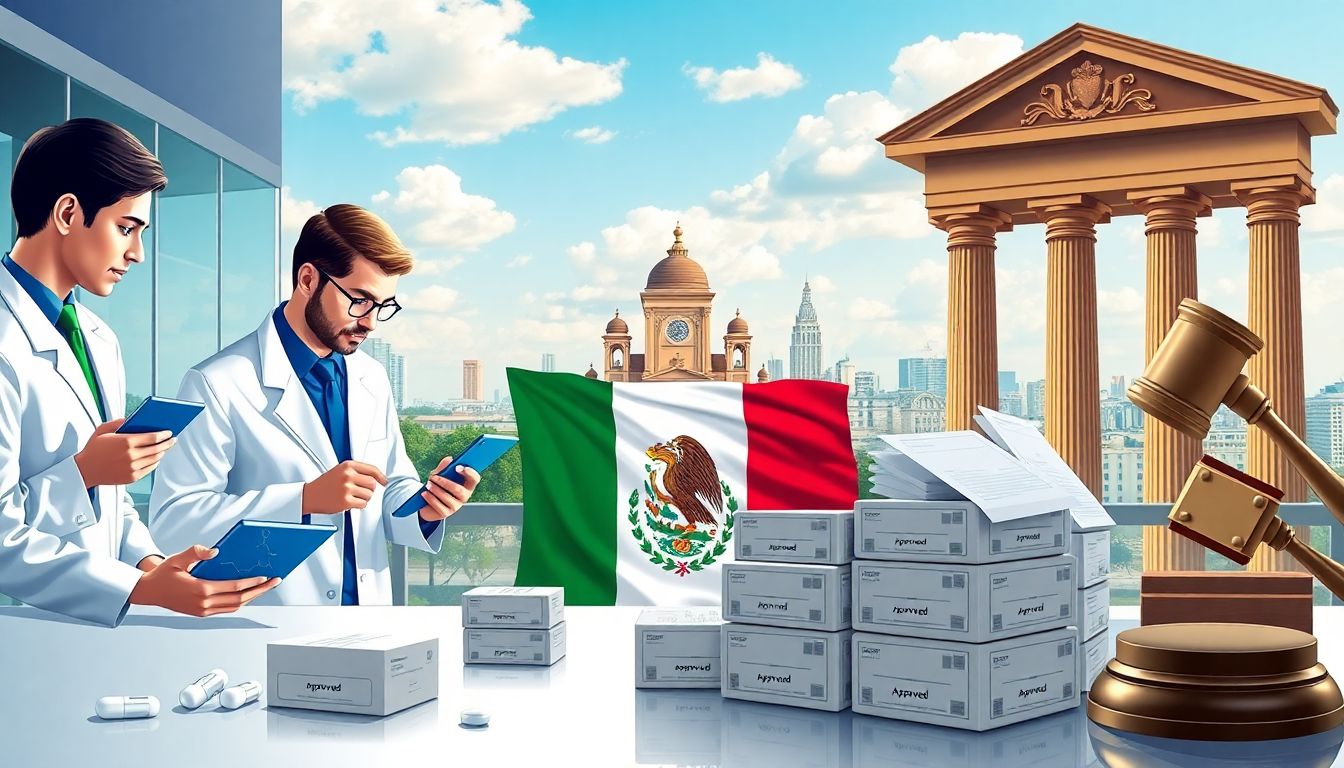
Mexico Generic Drug Approvals and Patent Litigation: Navigating the Complex Landscape
Introduction
Mexico's pharmaceutical market is booming. It’s become one of Latin America's fastest-growing sectors, driven by the need for affordable healthcare. As more generics enter the market, understanding how drugs get approved and how patents are protected becomes crucial. Companies that master these rules find it easier to succeed in Mexico’s competitive environment. Staying ahead means knowing the ins and outs of both approval processes and patent battles.
Mexico’s Regulatory Framework for Generic Drug Approvals
Overview of COFEPRIS and Its Role
The Federal Commission for Protection against Sanitary Risk, or COFEPRIS, is Mexico’s health watchdog. It makes sure medicines are safe and effective before reaching shelves. Recently, reforms have sped up approval times and simplified procedures, but challenges remain for foreign companies trying to navigate new rules.
Process for Approving Generic Drugs in Mexico
Getting a generic approved isn’t quick. It involves several key steps:
- Submit an application with detailed data
- Conduct bioequivalence studies comparing the generic to the original
- Wait through reviews by regulators
- Obtain final approval if all criteria are met
Applicants often face delays and need to prepare thorough documentation. Understanding these hurdles helps in planning market entry.
Requirements for Market Authorization
To get approval, companies must provide data proving:
- Bioequivalence with the branded drug
- Safety for patients
- Effectiveness in treating conditions
Quality standards in Mexico also align closely with international norms like those of the WHO, which boosts confidence in generic medicines.
Impact of International Agreements
Trade deals like USMCA influence drug approvals by harmonizing standards across North America. Mexico’s alignment with these international agreements makes it easier for foreign firms to navigate approval hurdles. This move fosters greater trust and consistency with global practices.
Patent Law and Intellectual Property Rights in Mexico
Legal Framework Governing Pharmaceutical Patents
Mexico’s patent law offers protections for drug inventions. Patent duration usually lasts 20 years from filing. Sometimes, patents can get extended if legal or regulatory delays occur, giving innovation a longer shield.
Patent Filing Process
Applying for a patent involves clear steps:
- Submit comprehensive technical documents
- Undergo examination by Mexican patent offices
- Await a decision that can take several years
A strong patent application is vital to prevent rivals from copying during the patent life.
Challenges to Patent Enforcement
Patent holders often face issues like:
- Invalid patent claims
- Competitors challenging patents in court
- Patent “evergreening,” where companies try to prolong exclusivity by slight modifications
Patent enforcement battles are common but complex, often requiring legal action in specialized courts.
Recent Patent Litigation Cases
Mexico has seen high-profile cases where big pharma challenged or defended patents. Outcomes vary, but these cases shape how future disputes unfold. Success or failure in these battles impacts market entry, pricing, and innovation incentives.
Patent Litigation Strategies and Challenges
Common Grounds for Patent Disputes
Disputes around patents often boil down to:
- Validity checks — is the patent truly novel?
- Infringement — does a generic violate the patent?
- Evergreening allegations — are companies unfairly extending patents?
Being clear on these issues helps firms prepare their legal approaches.
Litigation Procedures in Mexico
Patent conflicts usually start with administrative oppositions, where either side challenges patent validity. If unresolved, cases move to judicial courts. Mexico’s legal system involves multiple courts, which can prolong disputes or add costs.
Impact of Litigation on Market Entry
Legal battles cause delays. They also require hefty legal and administrative fees, which can be a big burden for companies. A strategic plan is essential to navigate patent barriers—sometimes through licensing or challenging patents upfront.
Expert Insights
Legal experts advise companies to prepare solid evidence for patent disputes. Collaboration between lawyers and scientists helps defend or challenge patents effectively. Knowledge of local courts and procedures can make or break a case.
Balancing Innovation and Access: Policy and Market Implications
Policies Promoting Generic Drug Entry
Mexico's government pushes for easier access to medicines. Initiatives include streamlining approval processes and reducing patent barriers for essential medicines. These efforts aim to boost local manufacturing and encourage innovation within the country.
Impact on Healthcare Costs and Access
Generics help cut healthcare spending. When local or imported generics enter the market after patent fights, prices drop, and patients enjoy more choices. Yet, some companies try to block generics through legal tactics, limiting access.
Case Studies
One example: after settling patent disputes, some firms introduced cheaper generics that improved public health. Reforms in patent laws also made it easier for small businesses to bring generics to market, enhancing overall access.
Conclusion
Mexico’s drug approval and patent landscape is complex but full of Mexico Generic Drug Approvals and Patent Litigation: Navigating the Complex Landscape opportunity. For pharmaceutical companies, understanding regulatory steps, patent rules, and litigation strategies can unlock success. Watch for trends easing approvals and balancing patent protections with public health needs. By mastering these areas, firms can thrive in Mexico’s growing pharmaceutical scene. Staying updated and smart in legal and regulatory maneuvers will be your best tools for market success.
Comments
Post a Comment